 There are countless roulette systems out there, some more famous than others, some better thought through than others, but all ultimately destined to fail in today’s game.
There are countless roulette systems out there, some more famous than others, some better thought through than others, but all ultimately destined to fail in today’s game.
Over time, rules and betting limits have been introduced to combat any mathematical system that might be able to take advantage of the game in over the long term, so while in the short term some of them can be successful, they will all fail eventually.
This doesn’t stop people using them though, and in terms of bankroll management they can sometimes be helpful to know about.
We have covered many of the best known on this page and you can read about them below, but first let’s get a full understanding of what a roulette betting system actually is, what they aim to do, and why they don’t work.
What is a Roulette System?
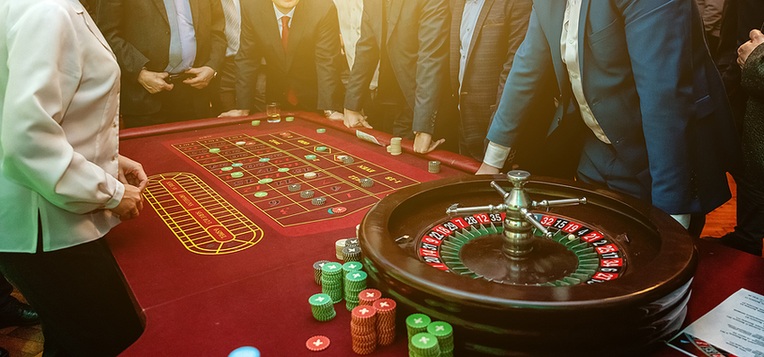
A system is an approach to betting on roulette that attempts to beat the game regardless of what happens from one spin to the next, by following a specific plan or set of rules.
For example, a negative progression system might follow a betting pattern that sees the player increase their stake on an even money bet each time they lose so that an eventual win recoups all losses up until that point, plus the profit from that eventual win.
In this case, the player would eventually end up ahead by one bet. Repeat this over and over and you have a slow but steady route to guaranteed profit in theory.
However, there are a number of things that get in the way of this otherwise genius idea as we will discuss shortly.
On the other side of the coin, positive progression systems see players increase their bets after a win and keep bets low after a loss, the aim of which being to take advantage of winning streaks and keep losses low during losing streaks.
Then there are systems which are a bit of both or neither one nor the other, but these can’t guarantee anything even in theory.
Why Don’t Roulette Systems Work?

Negative progression systems actually can work if you take away any restrictions such as bankroll size and table limits, but these things do exist, and they eventually scupper all roulette systems.
No one has limitless cash. A bankroll can run out before a cycle in a system has ended, and this leaves the player with no more money and therefore no chance to complete the system’s cycle and win back the money.
Even if you did have cash to burn, you would eventually hit the upper table limit, and if your next bet was another loser, you couldn’t increase your bet to cover that loss, so you would either have to stick at the limit and hope for a win soon to keep the loss small, or stop the system mid cycle and lose everything thus far.
As for other types of system, well they couldn’t guarantee an eventual profit even without the two barriers mentioned above. They rely on a little luck and then walking away in profit before your luck turns.
Add into this the fact that roulette does not pay out at true odds, and over the long term the player is destined to lose. It is a well known fact that the longer you play a game with a house edge, the more likely the house is to get your money.
To explain this further, the true odds of a straight up bet winning are 1 in 37, because there are 37 numbers on the roulette wheel; 0-36. However, the payout for this is 35:1, which is the casino’s edge, so even when you win you aren’t getting a fair deal. This is the case for every single bet type on the table.
Roulette is a perfectly balanced game, which cannot be beaten by any legitimate means. The only way to do it is to exploit a defect in the wheel or to cheat in some way.
What are the Different Roulette Systems?
On this site, we have dedicated articles explaining each of the following systems in more depth, and you can navigate to them by clicking the title of each one below.
If you just want a brief overview of what is out there however, then the following are the most well known systems that people tend to try.
They aren’t in a strict order, but those towards the bottom are the more obscure and those towards the top are more likely to be used by the majority of players.
The Martingale System
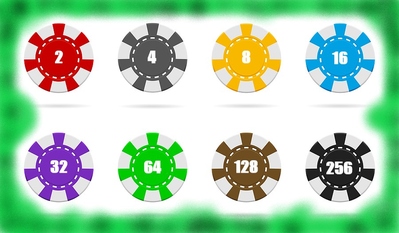 By far and away the most famous roulette system out there, the Martingale is often sold by scammers as a ‘new way to beat the wheel’, despite having been around for over a hundred years in one form or another with instructions freely available on Wikipedia.
By far and away the most famous roulette system out there, the Martingale is often sold by scammers as a ‘new way to beat the wheel’, despite having been around for over a hundred years in one form or another with instructions freely available on Wikipedia.
It is a very simple method of guaranteeing a profit in any game where the player stakes a single betting unit in return for another – so any bet that has odds of 1:1 basically.
It works by doubling your bet after each loss, so as to recoup any previous losses as well as claiming the profit on the eventual winning bet.
If the player’s first bet is a win, the system is considered completed and starts again, so the stake size remains the same. However, if the first bet is lost the stake size must double, then double again following another loss, and once more again following a third.
In this way the stake size compounds until an inevitable win occurs and the system is completed. Each complete cycle of the system sees the player in profit by one betting unit, so they will win the same number of betting units as rounds completed.
The Fibonacci System
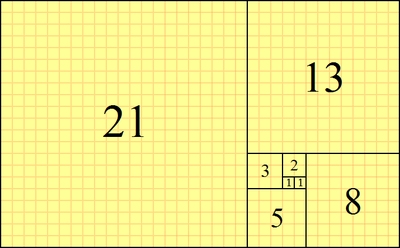 Named after an Italian mathematician, the Fibonacci system uses a well known set of numbers to determine the bet size.
Named after an Italian mathematician, the Fibonacci system uses a well known set of numbers to determine the bet size.
The Fibonacci number sequence goes on to infinity, by adding the last two numbers in the sequence together to create the next number in the sequence.
So 0, 1 becomes 0, 1, 1, which becomes 0, 1, 1, 2, which becomes, 0, 1, 1, 2, 3, which becomes, 0, 1, 1, 2, 3, 5, etc.
This can spiral out of control very quickly by the time the tenth number in the sequence has been reached; it jumps from number 34 to number 377 in just five steps. That’s a lot of betting units.
The player must continue to bet larger amounts in this way after every loss, but after each win they must go backwards in the sequence by two places.
The sequence should be ended and restarted at the point the player comes into profit for that cycle.
The D’Alembert System
 This is a more measured approach than the two systems already discussed.
This is a more measured approach than the two systems already discussed.
It’s a bit like ladder system, with the bet increasing by one betting unit after each loss (rather than doubling the stake) and then decreasing by one betting unit after a win.
So the next bet after an initial losing bet of £1 would be £2, the next would be £3, the next £4, and so on. Successive wins at this point would see the stake reduced to £3, then £2, then £1.
In this way, the player moves up and down the scale until they eventually end up in profit.
The attractive thing about the D’Alembert system is that the player needs fewer wins than losses to get back to even or to even make some profit.
Once a player comes into profit or gets back to betting a single unit the cycle is ended and the player should start again.
A cycle can last an awfully long time if a losing streak takes the player too far away from the starting point, and of course, the longer the game is played the more chance there is that the house edge will erode the bankroll.
The Labouchere System
 People like the Labouchere system because it gives them an illusion of control.
People like the Labouchere system because it gives them an illusion of control.
With this system, the player must pick an amount they want to try and win, and then break that amount down into betting units of different sizes that make up the total.
So £20 might be broken down into 5, 5, 5, 5; or maybe, 5, 4, 1, 1, 4, 5; it doesn’t really matter how it’s broken down, just so long as it is.
The player then adds the two numbers at each end of the sequence together and uses that as their stake, mentally crossing the numbers off if they win, and adding the amount they lost to the end of the sequence if they lose, before including it for the next bet.
So using the 5, 5, 5, 5, sequence, the first bet would be for 10 units, which, if lost, would be added to the sequence (5, 5, 5, 5, 10), making the next bet worth 15 units.
Once all numbers are crossed off after wins, the cycle is complete and the sum of all the numbers in the original sequence will have been won.
Of course you need enough in the bank to keep betting if you hit a losing streak.
The Oscars Grind System
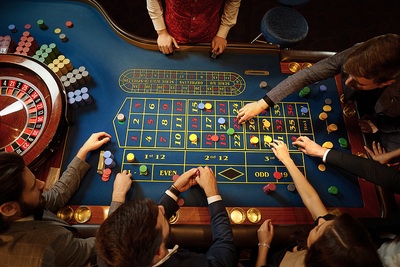 Unlike most systems, which are negative progression systems, Oscars Grind is a positive progression system.
Unlike most systems, which are negative progression systems, Oscars Grind is a positive progression system.
This means that instead of increasing your bet after a loss, you increase your bet after a win, and thus take advantage of winning streaks while limiting the damage on losing streaks.
If the player was betting one unit per game and they lost, their next bet would be for the same amount. If they lost again their bet would remain unchanged. But if the next bet wins, then their stake would increase to 2 betting units.
Another loss wouldn’t reduce the bet size, it would stay the same at 2 units, but another win would see it increase to 3 units.
In this way, losses are clawed back during winning streaks, and at the point when the player is eventually in profit, the system resets and the stake goes back to 1 betting unit again.
The system also has the benefit of avoiding stake sizes that spiral out of control too quickly, so the player is less likely to go bust or hit an upper table limit in the process – although of course these things can still happen.
The Paroli System (Reverse Martingale)
 An extremely simple positive progression system, the Paroli is also know as the Reverse Martingale because it is the exact opposite of the Martingale, in that stakes are doubled after wins not losses.
An extremely simple positive progression system, the Paroli is also know as the Reverse Martingale because it is the exact opposite of the Martingale, in that stakes are doubled after wins not losses.
A player would work with an unchangeable base stake relative to their overall bankroll – so no more than about 5% of the total amount available to play with.
After a win, the stake doubles for a maximum of three wins in a row. After 3 wins in a row the stake resets to the base level regardless. So if the base stake was 1 betting unit this would double to 2 after a win, then 4 for the third and final bet in the cycles.
So a player using a base stake of 1 should never be betting more than 4 units. If the base stake was 5, then 20 betting units would be the maximum bet for win number three in the cycle.
The stake also resets after any loss at any point in the system.
The idea here is to capitalise on mini win streaks, since runs of 3 wins in a row aren’t exactly rare, but to keep losses pared back by not pushing things too far (4 wins in a row is much more rare) and always betting low during losing streaks.
This system couldn’t guarantee a positive outcome like the Martingale could (previously noted barriers to success aside), but the hope is that the amplified wins from any mini runs of luck would outweigh any losses.
The Tier et Tout System
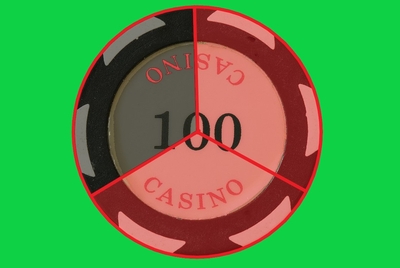 This is a high risk system that aims for quick gains, and ultimately for the player to be gambling with the casino’s money.
This is a high risk system that aims for quick gains, and ultimately for the player to be gambling with the casino’s money.
It requires a starting bank that is divisible by 3, so £90 would work as an example.
The first bet would be 1/3 of the bank (£30), and if this bet lost, the player would bet the remaining 2/3 (£60) on the second game.
Should either of these two bets win, the new total bank would be £120, so the player would again split this into thirds and bet 1/3 (£40) on the next game, and if that bet lost they would stake the remaining 2/3 (£80) on the next game.
This goes on until the player ends up with a total amount that is not divisible by three, at which point the excess is skimmed off the top and banked as profit, and the remaining bank roll is split into thirds again.
Eventually, there will be enough profit in the player’s pocket to cover their initial £90 bankroll and they are gambling with the casino’s money.
Of course, it is perfectly possible to lose two bets in a row, in which case the entire bankroll would be lost inside of 2 minutes. That is why this is a high risk/reward system to use.
That said, there is nothing stopping a player using the system and stopping when their bank gets too tempting to risk anymore. The player doesn’t have to keep going.
The James Bond System
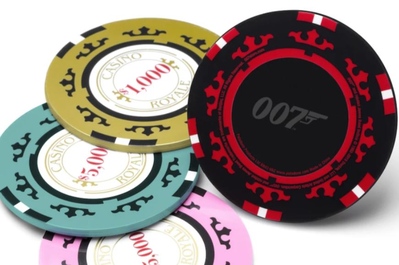 One of the few roulette systems that doesn’t stick to even money bets, the James Bond system takes inspiration from its namesake in being a little more dangerous and unpredictable than your average system.
One of the few roulette systems that doesn’t stick to even money bets, the James Bond system takes inspiration from its namesake in being a little more dangerous and unpredictable than your average system.
In a nutshell, the system covers all numbers on the board except 1-12, which is roughly 68% of the table. However, it costs 20 betting units per game and requires the player to double after losing bets, just like the Martingale, so it can get expensive quickly.
What’s more, the returns for a win are different depending on which number of those you have covered comes in.
The bet consists of:
- 14 Betting Units – Outside bet, placed at 1:1 on numbers 19-36.
- 5 Betting Units – Inside line bet paying 5:1 and covering numbers 13-18.
- 1 Betting Unit – Placed on the zero as a straight up bet paying 35:1.
If using £1 as 1 betting unit, then a loss would cost £20 and the next bet would be £40, then £80, etc. Whereas a win on the initial bet would net the player between £8 and £16 in profit depending on which bet came in.
The chances of long losing streaks are not as high since over 50% of the board is covered, but they can still happen, and recouping losses by doubling bets becomes expensive quickly.
Three losses in a row using our example would see the player down £140 and needing to stake £160 on the next spin.
The Kavouras System
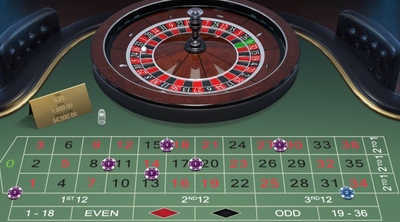 This is the least ‘system’ like betting system on the list, because the player simply stakes the same amount on the same numbers, in the same way on every bet.
This is the least ‘system’ like betting system on the list, because the player simply stakes the same amount on the same numbers, in the same way on every bet.
And before you ask, no, it isn’t just a funny way of saying ‘cover your a$$’.
It’s a 7 bet system covering 20 numbers, using 5 splits, 1 line, and 1 corner bet, but costing 8 betting units since 2 units are bet on the line rather than 1.
It looks chaotic on the board but it offers very balanced coverage on the wheel and has a 54% chance of coming in.
Because of the different bet types, the player can win 6, 9 or 18 betting units per spin, but the risk is always 8 units.
Players also like this system for its’ flexibility, as some of the rules described in other systems could be applied to this one, and players can also adapt stake sizes as they see fit.
